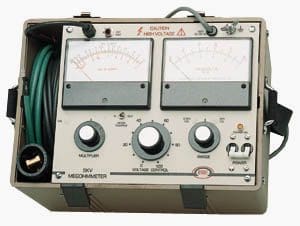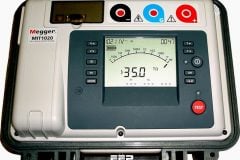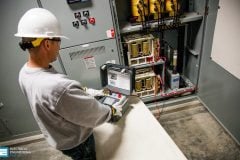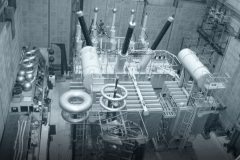 The purpose of electrical testing on systems and their components is two-fold. The first is to check the installation of the equipment and perform component and systems tests to ensure that, when energized, the system will function properly. The second is to develop a set of baseline test results for comparison in future testing to identify equipment deterioration.
The purpose of electrical testing on systems and their components is two-fold. The first is to check the installation of the equipment and perform component and systems tests to ensure that, when energized, the system will function properly. The second is to develop a set of baseline test results for comparison in future testing to identify equipment deterioration.
The system should be initially checked for damage, deterioration, and component failures using specific component checks, inspections, and tests defined by the equipment manufacturer. Then the interconnection of the system components should be checked, using de-energized and energized methods, to verify the proper interconnection and operation of the components, including on/off control, system process interlocks, and protective relaying functions.
Once the above tests are complete, the system can be energized and operational tests and measurements should be performed.
All steps and results of the testing should be carefully documented for review and for use in the future for comparison with the results of future tests. Many of the same component tests initially run will be performed at regular intervals as part of a maintenance program. The new results will be compared to the initial results, where variations may be indicative of problems like deterioration of insulation or dirty equipment.
A test program will commence after completion of installation and will usually include field inspection and installation checks, de-energized component testing, verify instrument and relay operation and calibration, visual check of all wiring, continuity checking of control circuits, energized functional testing of control circuits, megger testing of power circuits, test of power circuit phasing, energizing of equipment, and service testing.
If problems are found during the testing, an analysis should be performed, and a repair and retest should be performed that is approved by the manufacturer, engineer, and system operator.

Many of these initial tests will be repeated periodically as part of the system maintenance program depending on the load conditions, duty cycle, environmental conditions, and the critical nature of the equipment. Because of this, the completeness and clarity of the test reports is important as they supply baseline data for comparison with the results of the maintenance tests.
Many tests on electrical equipment involve the use of high voltages and currents that are dangerous, both from the standpoint of being life hazards to personnel and because they are capable of damaging or destroying the equipment under test. Adequate safety rules should be instituted and practiced to prevent injury to personnel, both personnel who are performing the tests and others who might be exposed to the hazard. Also, the test procedures used should be designed to ensure that no intentional damage to equipment will result from the testing process.
There are four categories of tests for electrical equipment: factory, acceptance, routine maintenance, and special maintenance.
Factory tests
Factory tests are performed at the factory to prove the equipment was manufactured properly and meets specific design parameters.
Acceptance tests
Acceptance tests are also proof tests performed on new equipment and systems usually after installation and before energization. They are run to determine whether the equipment is in compliance with specifications, to establish benchmarks for future tests, to determine the equipment was installed without damage, and to verify whether the equipment meets its intended design operation and limits.
Routine and special maintenance tests
Routine and special maintenance tests are run after the equipment has been in service for a certain amount of time to determine the degree of deterioration of certain equipment physical parameters as operating time increases. Routine tests are performed on a periodic basis and special tests are performed on defective equipment to help determine the cause of a failure and/or the extent of the damage.
The same type of tests and measurements are performed for all of the categories using different voltage values. The acceptance tests are usually run at 80 percent and the maintenance tests are usually run at 60 percent of the factory test voltage values to help indicate deterioration without being destructive. The following paragraph discusses the acceptance testing. The routine and special maintenance testing is discussed in chapter 5.
Acceptance testing is a system verification and functional performance test which should be performed on the UPS system. These tests will include installation inspections, individual component testing, testing on wiring, control and interlock functional checks, equipment energization and system operating measurements, and functional checks.










